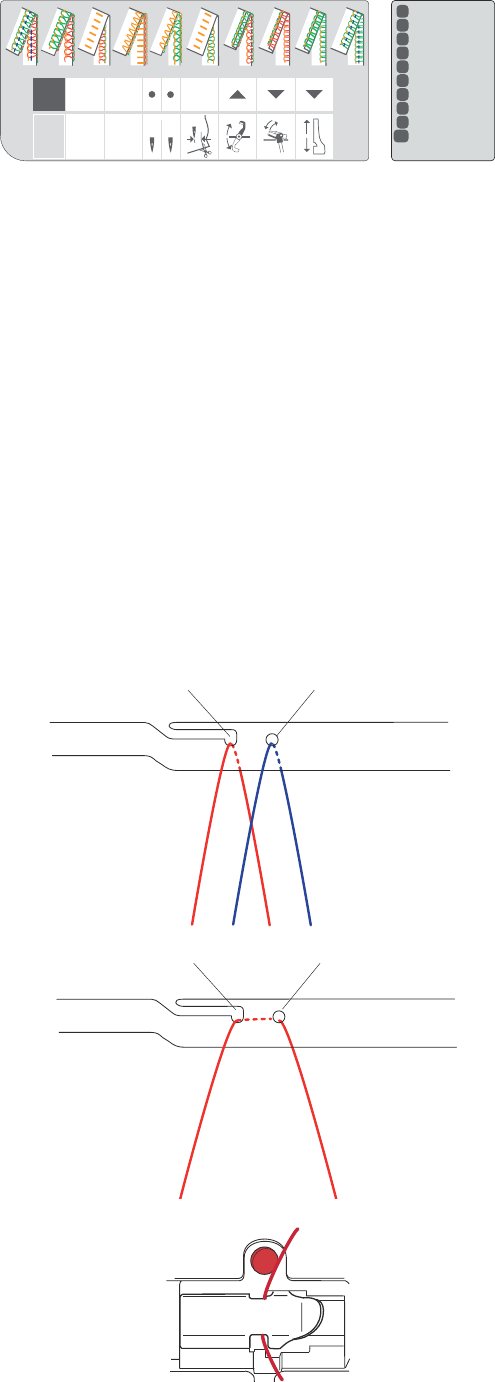
30
SECTION III
Threading
The threading routes will change according to
the selected program.
As you learn to thread your machine, we recommend
using threads of the same colors as those of the
tension dials. This will help you understand the
function of each thread.
Tension settings of the programs are based on the
sewer using polyester or polyester/cotton blend
threads for all threading positions. Choose good
quality threads of even and consistent thickness.
NOTE:
The threads are stretched as they pass through the
tension discs while sewing. Therefore, it is important
to use high tensile threads such as polyester or
polyester/cotton blend. 100% cotton thread is too
weak and will result in threads breaking.
IMPORTANT:
Locate the threading diagram for the stitch, study
the threading guides carefully and use each guide
indicated. The machine must be threaded in the
correct sequence. Follow the sequence shown on
the Quick Reference Threading Charts. (See pages
32-45.)
Thread Guide Bar
Extend the thread guide pole to its highest position.
(See page 14.)
When threading the thread guide bar, use either the
slot or the hole depending on type of the threads
used. Threading through the hole is recommended
especially when sewing with decorative threads.
q Slot
w Hole
Some tightly twisted threads need special threading
through both the hole and the slot.
w
q
wq
After threading the thread guide bar, slip the thread
into the first guide on the machine as shown.
SAFETY 4-THREAD
3-THREAD WIDE
FLATLOCK 3
BLANKET 3
OVERCAST 2
FLATLOCK 2
NARROW HEM 3
ROLLED HEM 3
ROLLED HEM 2
STRETCH
WRAPPED 3
1
2
3
4
5
6
7
8
9
10
12345678910
NO. DF SL
LR
N
1.0 2.5
1


















